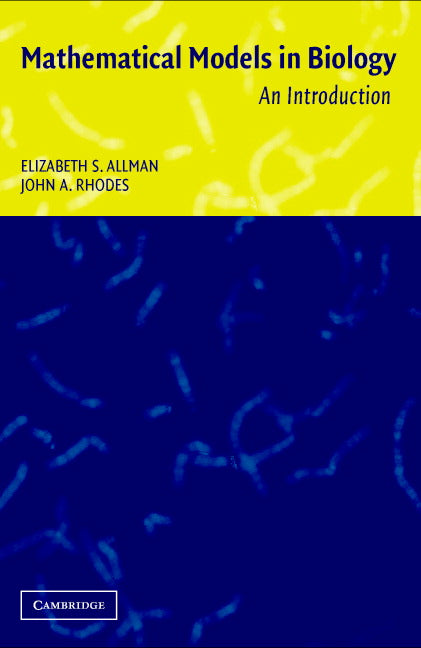Freshly Printed - allow 8 days lead
Couldn't load pickup availability
Mathematical Models in Biology
An Introduction
Linear and non-linear models of populations, molecular evolution, phylogenetic tree construction, genetics, and infectious diseases are presented with minimal prerequisites.
Elizabeth S. Allman (Author), John A. Rhodes (Author)
9780521525862, Cambridge University Press
Paperback, published 13 October 2003
386 pages, 65 b/w illus. 40 tables 375 exercises
22.9 x 15.2 x 2.4 cm, 0.518 kg
'This is an attractive introduction into the modelling of biological processes at a very elementary level. … Many exercises motivate the reader to acquire a deeper understanding of the topics treated. Also a substantial number of MATLAB projects are suggested to give the students hands-on experience.' Monatshefte für Mathematik
This introductory textbook on mathematical biology focuses on discrete models across a variety of biological subdisciplines. Biological topics treated include linear and non-linear models of populations, Markov models of molecular evolution, phylogenetic tree construction, genetics, and infectious disease models. The coverage of models of molecular evolution and phylogenetic tree construction from DNA sequence data is unique among books at this level. Computer investigations with MATLAB are incorporated throughout, in both exercises and more extensive projects, to give readers hands-on experience with the mathematical models developed. MATLAB programs accompany the text. Mathematical tools, such as matrix algebra, eigenvector analysis, and basic probability, are motivated by biological models and given self-contained developments, so that mathematical prerequisites are minimal.
1. Dynamic modeling with different equations
2. Linear models of structured populations
3. Non-linear models of interactions
4. Modeling molecular evolution
5. Constructing phylogenic trees
6. Genetics
7. Infectious disease modeling
8. Curve fitting and biological modeling
Appendix A. Basic analysis of numerical data
Appendix B. For further reading.
Subject Areas: Maths for engineers [TBJ], Biology, life sciences [PS], Maths for scientists [PDE]


